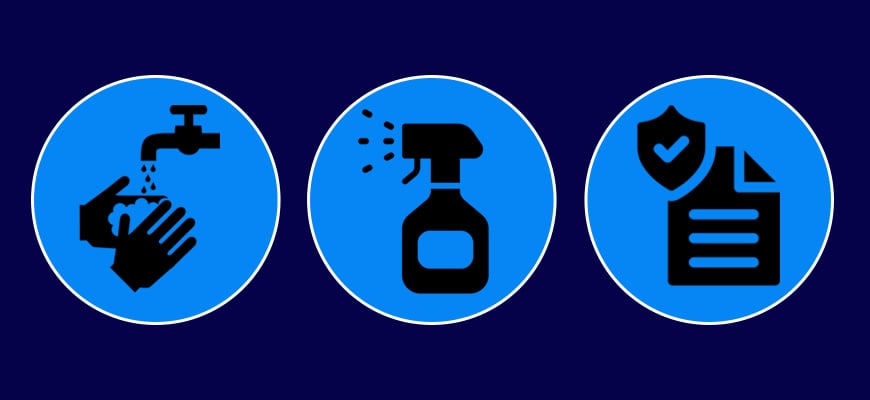
Creating your own Rocket Industrial personal account has many benefits:

Increased focus on cleaning and sanitation practices will be a critical element of all businesses’ operational plans. By establishing strict standards, following janitorial best practices and using the right equipment and chemicals, you can maintain a healthy and safe facility for workers and visitors.
It’s time to rethink procedures and encourage cleanliness.
There are many ways companies can encourage workplace cleanliness. Some of these examples include: installing hand sanitizing stations between work zones, prominently increasing signage related to hygiene, posting time-stamped cleaning schedules and relaying new cleaning procedures to employees.
Other tactics include rethinking the placement of hygiene utilities such as where dispensers are located in bathrooms. Having paper towel dispensers near the sinks with a garbage can near the door so people can grab the door handle with the paper towel, then dispose of it is a more hygienic layout option.
It’s important to strongly consider developing a written cleaning program policy that identifies key components to your new cleaning program. A complete policy should include what procedures should be in place, how often these procedures will be reviewed and when employees will receive training on these procedures. There should also be a way for employees to give feedback on changes.
Follow these guidelines to make cleaning safer.
1. Wear protection. Always wear disposable gloves when doing any sort of cleaning tasks.
2. Read the label. Pay close attention to cleaning chemical labels to make sure they meet your use criteria.
3. Maintain sufficient stock. Keep a full stock of cleaning and sanitation supplies on hand at all times.
4. Implement color-coded cleaning. Color-coded cleaning processes help prevent cross-contamination. We recommend red for high-risk areas (toilets, urinals), yellow for lower-risk areas (common areas/warehouses), green for food service and prep areas and blue for all general purpose cleaning (office spaces).
Sanitizing vs Disinfecting
Sanitizers reduce and kill 99.999% of bacteria, but not viruses. They are typically used in foodservice environments to keep surfaces that come into contact with food clean and safe. They are often used on frequent, high touch areas in facilities, offices and schools.
Disinfectants are stronger solutions that destroy germs and kill certain viruses within 10 minutes. They are often used for cleaning up bodily fluids and areas in facilities that are extremely high risk for disease spread, such as toilets. They can also be used in high traffic areas where viruses could live.
Sanitizers and disinfectants must display a “kill claim” to show which bacteria and viruses they are effective against and the time it takes to completely remove them. It’s important to take the kill time into consideration when evaluating which chemical meets the needs of your facility as well as effectiveness, safety and ease of use.
Floors are a critical but often overlooked surface that requires disinfecting. Properly cleaning floors is just as important as other surfaces since harmful pathogens can be spread as people walk through building spaces. These pathogens have the possibility of transferring to our hands and increase the risk of virus transmission.
Floor scrubbers are ideal for cleaning and disinfecting hard surfaces and high traffic areas. Paired with the proper diluted disinfecting solution, a floor scrubber can help prevent the spread of diseases within a facility.
We can help you determine the best products for your cleaning needs. Whether you are looking to invest in floor care equipment or stock up on key supplies, we are here for you. Contact us with any questions, we’ll be happy to supply you with the tools you need to make your facility safer, cleaner and healthier.